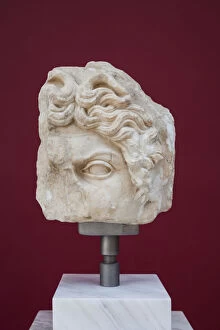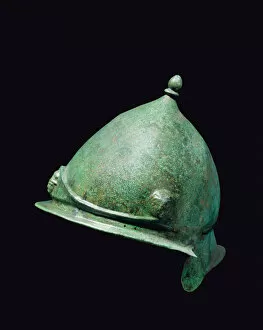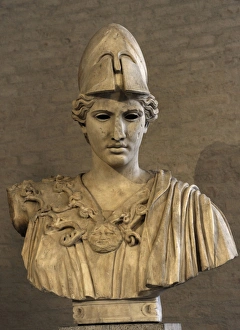Gorgoneion Collection
"Gorgoneion: A Powerful Symbol of Ancient Mythology and Protection" The Gorgoneion, a symbol deeply rooted in ancient mythology
All Professionally Made to Order for Quick Shipping
"Gorgoneion: A Powerful Symbol of Ancient Mythology and Protection" The Gorgoneion, a symbol deeply rooted in ancient mythology, has captivated the imagination for centuries. From the Bust of Athena to the Roman Agora fragment, this iconic image of a grotesque face with protruding tongue and snakes for hair has left an indelible mark on art and culture. One notable representation is the Medusa Rondanini, a Roman copy that pays homage to classical works from the 5th century. Its intricate details showcase Medusa's terrifying visage, capturing her petrifying gaze that turned men into stone. Coins dating back to 120-63 BCE also depict the Gorgoneion, showcasing its significance as a protective talisman. The unknown creator skillfully crafted these coins to ward off evil spirits and bring good fortune to those who possessed them. Intricate mosaics like the one found in the Hall of Mosaics in Alcazar of Christian Kings further emphasize its importance. This mosaic featuring Medusa highlights her role as both feared monster and powerful guardian against malevolent forces. Not limited to sculptures or mosaics alone, even vessels such as eye-cups were adorned with this fearsome symbol. Dating back to 530-520 BC, these clay cups showcased scenes from Greek mythology alongside Gorgoneions - a testament to their enduring popularity throughout history. The engraving of Gorgoneions on various artifacts showcases their widespread use across different cultures and time periods. Whether it be replicas like the Roman replica of Athena Farnese or east Greek plastic perfume-pots shaped like crouching monkeys adorned with Gorgoneions - this symbol transcends boundaries. From Athens' rich heritage at Greece's heartland to Rome's influence over vast territories, civilizations have recognized and revered the power behind this mythical figure.

















